Hybrid sweet peppers have long been popular among gardeners and hobby growers. They stand out due to their improved yield, excellent taste, long shelf life, and resilience to adverse conditions. These are the qualities that define the hybrid pepper Ombrone F1.
Table of contents
What Is This Pepper?
Ombrone is a hybrid red sweet pepper. The seed producer is the Japanese company Sakata.
Suitable for cultivation in both protected and open ground. The fruits can set even in cooler temperatures.
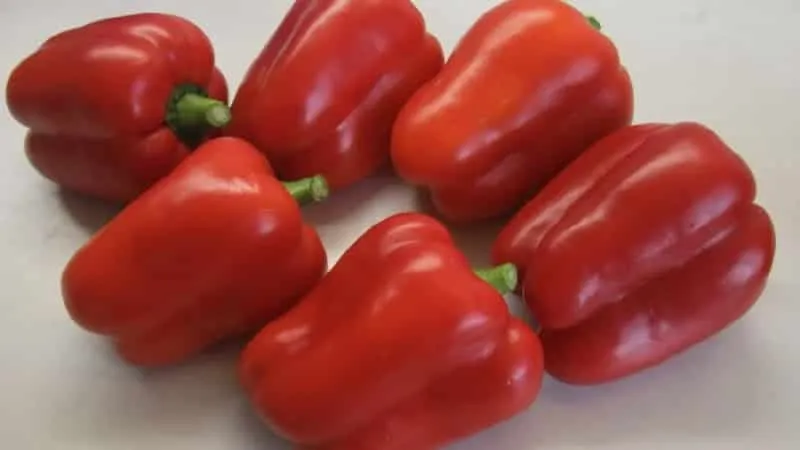
F1 Hybrid
Ombrone pepper is a mid-early variety. It is low-maintenance, tolerates environmental stress well, and is suitable for transport.
Characteristics and Description
The plant is robust, semi-spreading, ranging from tall to medium height. The foliage is medium-sized, slightly wrinkled, and varies from dark green to green. Ripening begins 70–75 days after transplanting seedlings into the ground.
Distinctive Features
It yields more abundantly in greenhouses than in open fields. Known for its large fruits and well-balanced, vibrant flavor that remains even after freezing. Perfect for fresh salads and preserves.
Note. The pepper can produce fruit throughout the season if proper cultivation techniques are followed. It thrives in Central and Northern European climates with cooler temperatures.
Fruit Characteristics and Yield
The fruits are cuboid, elongated, and three- to four-chambered. The tip is blunt, with a wall thickness of 8 mm. The vegetable reaches 15–18 cm in length and weighs 300–400 g. The peppers are sweet, juicy, and free of bitterness. When fully ripe, they turn bright red.
Ombrone pepper boasts high productivity — up to 5.5–6 kg per m². It adapts well to moderate climates.
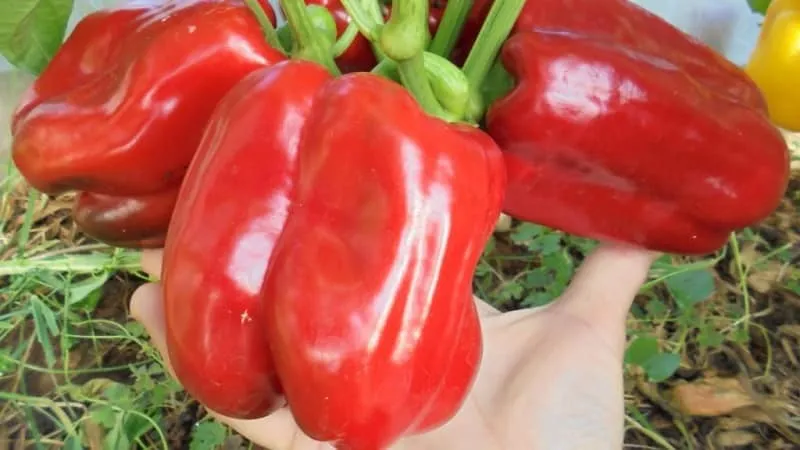
Preparation for Cultivation
To fully enjoy the taste and high yield of this pepper, it's essential to grow strong seedlings and provide proper care.
Soil Preparation
It's best to prepare the soil in autumn. A mix of sod land, peat, humus, and wood ash is ideal. A week before sowing, warm the soil indoors. Disinfect it with a potassium permanganate solution or a fungicide, then let it dry.
Seed Soaking
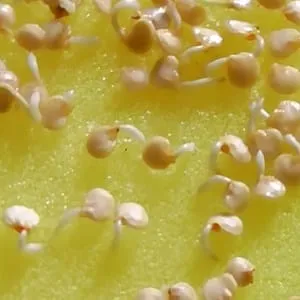 To improve germination rates, treat the seeds with growth stimulants. A nettle infusion works well: steep 1 tbsp of nettle leaves in boiling water for 30 minutes. Alternatively, use European stimulants like Biobizz Root Juice or Alg-A-Mic.
To improve germination rates, treat the seeds with growth stimulants. A nettle infusion works well: steep 1 tbsp of nettle leaves in boiling water for 30 minutes. Alternatively, use European stimulants like Biobizz Root Juice or Alg-A-Mic.
Soaking softens the seed coat and speeds up sprouting. Place seeds on a damp cloth or sponge, cover with another layer, and keep moist. Once swollen, plant them in soil or let them sprout before transplanting.
Sow seeds 1–1.5 cm deep, spaced 2–3 cm apart. Row spacing should be 15–20 cm. Place 1–2 seeds per cell or cup. Cover containers with film until sprouts appear, ventilating occasionally and watering with lukewarm water.
Important! Overwatering and soil temperatures below +18°C can delay germination.
Sprouting
Optimal soil temperature for sprouting is +26…+28°C. Keep the substrate moist, and ensure temperatures don’t drop below +16…+18°C. Under these conditions, seedlings emerge in 7–12 days. Water only when the soil dries.
Harden off sprouted peppers to help them adapt to outdoor conditions. Gradually expose them to outdoor temperatures over several days.
Growing Seedlings
After sprouting, move seedlings to a bright area, maintaining temperatures at +16…+18°C initially, then increasing to +25°C (day) and +15°C (night) over a week. Ensure 12 hours of light daily, supplementing if needed.
Important! To prevent rot, water with warm water every 1–2 days.
Loosen soil to 3–5 cm depth, drain excess water from trays, and aerate roots. Fertilize with a 1% solution of complex fertilizer after 2–3 leaves appear, repeating every two weeks.
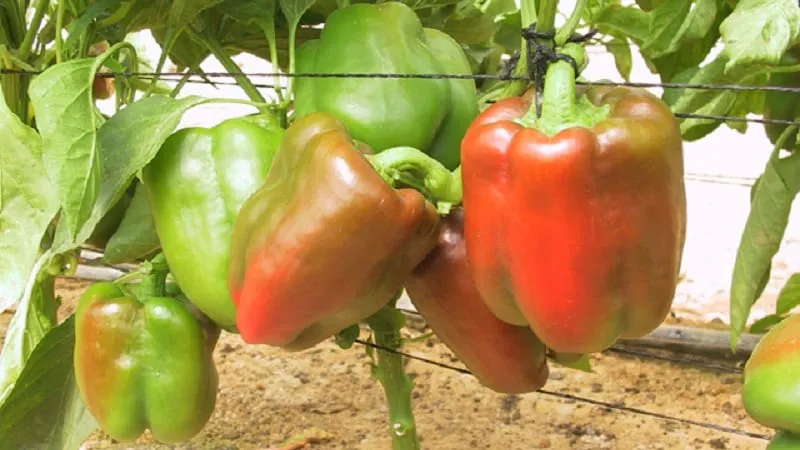
Planting Peppers
If seeds were sown directly, thin seedlings after 20–30 days by trimming the central root by 1 cm before transplanting to larger containers. Potted seedlings can be transplanted after 50–70 days.
Ready-to-transplant plants have 5–8 true leaves, no more than 2 fruit sets, and stand 15–20 cm tall.
Plant after the last frost, when air temperatures reach +16…+18°C and soil warms to +12…+15°C. Evening planting avoids sun stress. Space holes 40 cm apart (4–5 plants per m²). Add a 2:1 mix of humus and ash to each hole, plant up to the root neck, water, and mulch with peat.
Ongoing Care
Mulch with straw, sawdust, or hay after watering or fertilizing. Loosen soil carefully (5–7 cm deep) to avoid root damage. Hill plants 2–3 times per season.
Sturdy stems allow for shaping by pruning upper shoots above the second or third leaf. Remove non-fruiting branches and lower leaves. Use stakes to support heavy fruit.
Growing Challenges and Solutions
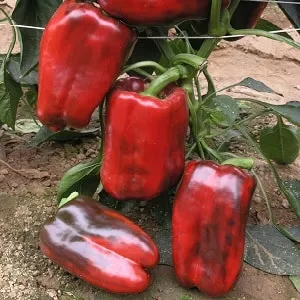 Ombrone is grown exclusively from seedlings. Avoiding thinning leads to earlier harvests.
Ombrone is grown exclusively from seedlings. Avoiding thinning leads to earlier harvests.
Key to healthy growth is optimal conditions. Never plant sweet peppers near hot varieties, or they may develop bitterness.
Water once weekly in moderate weather, increasing to twice in heat. Avoid drought (causes leaf drop and small fruit) or waterlogging (leads to root rot).
Warning! Lack of light weakens plants. The hybrid prefers loose, organic-rich soil with neutral pH.
Grows well after carrots, cabbage, beets, or pumpkins. Avoid planting near cucumbers.
Fertilize every two weeks, alternating mineral and organic feeds (e.g., diluted manure 1:10). Ensure sufficient magnesium and potassium—avoid chloride, which reduces flowering.
Common Pests and Diseases
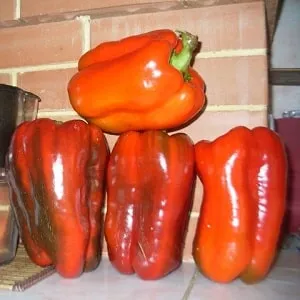 Though resistant to most pests and diseases, preventive treatment with Bordeaux mixture is recommended.
Though resistant to most pests and diseases, preventive treatment with Bordeaux mixture is recommended.
For infections, use systemic fungicides. Burn infected plants to prevent spread.
For insects, apply insecticides or natural remedies:
- onion husk decoction;
- garlic infusion;
- celandine extract.
Pros and Cons
Advantages:
- High yield with proper care;
- Large, flavorful fruits;
- Pest and disease resistance;
- Fruit sets in cool temperatures;
- Long shelf life;
- Good transportability;
- Versatile use (fresh, preserved, frozen);
- Low-maintenance growth.
Disadvantages: Higher seed cost, requires pruning and staking.
Testimonials
 Gardeners praise Ombrone for its ease of growth and productivity.
Gardeners praise Ombrone for its ease of growth and productivity.
Sophie, France: “I had 100% germination. The seedlings were strong and healthy. By August, I harvested huge, sweet, juicy peppers. This hybrid is now a staple in my garden.”
Elena, Spain: “I discovered Ombrone online, impressed by reviews and photos. Though challenging to maintain at my age, the results were worth it—plenty for freezing and pickling.”
Conclusion
By following cultivation guidelines and providing optimal conditions, you’ll enjoy a bountiful harvest of large, sweet peppers—perfect for fresh eating, preserving, or freezing.







